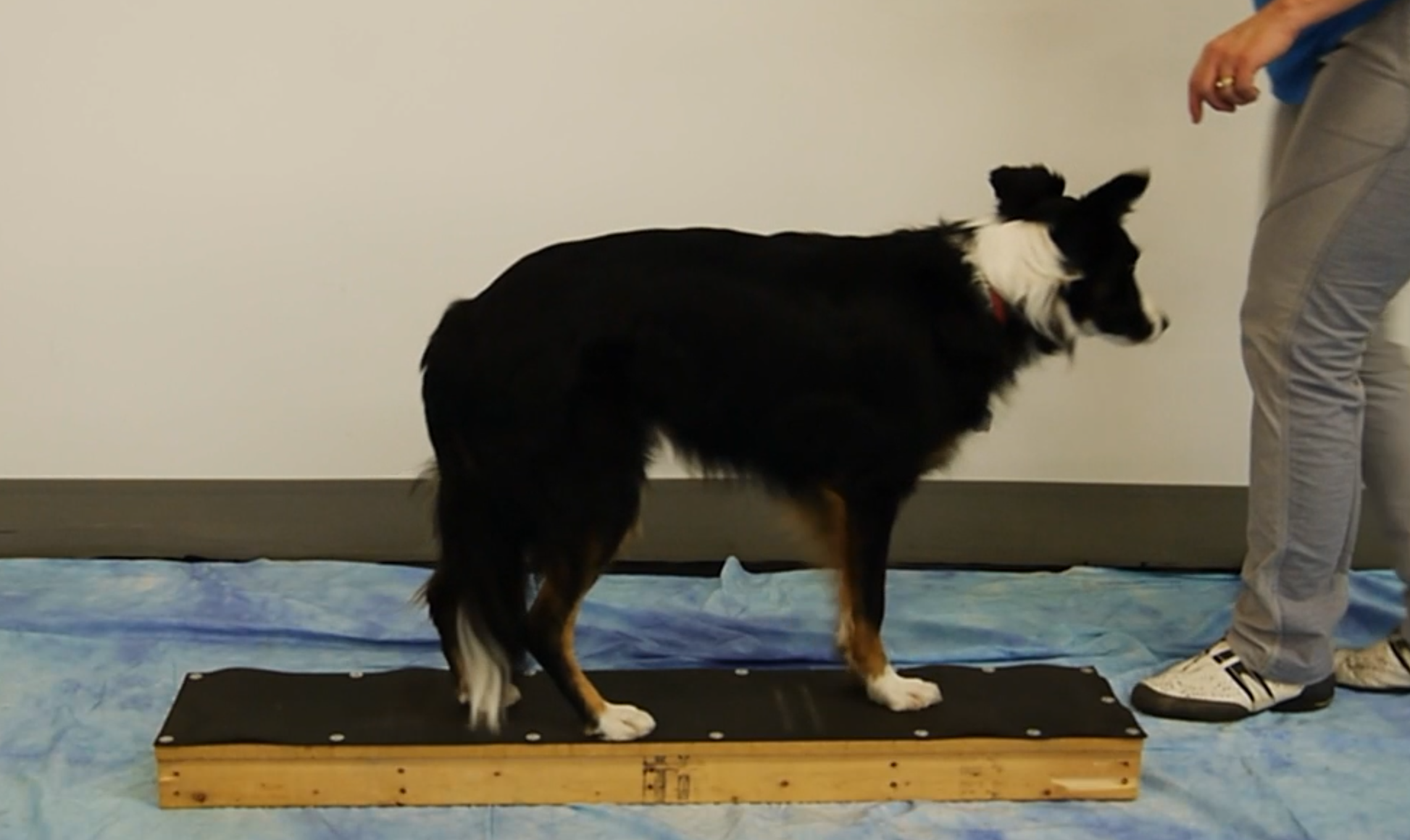Laurie's Blogs.
Dec 2017
Maybe some Motor Control?

Here goes my attempt at explaining and simplifying the concept of MOTOR CONTROL. As eluded to in earlier blogs, it’s not all about ‘core stability’, and the notion was put forth that perhaps dogs don’t need that in the same capacity as would a human. BUT, that is not to say that they don’t need to strengthen muscles around the ‘middles’ and the ‘lumbopelvic region’ but rather we’re missing key elements if we just lump things into ‘core stability’ without thinking about it in greater detail.
One of the descriptions I presented in an earlier blog, http://www.fourleg.com/Blog/329/What-IS-Core-Stability?, stated: “An alternative term to “core stability” is “motor control” that reflects concepts around lumbar stability in a more holistic approach including: the brain, sensory inputs, motor outputs, mechanical properties of muscles/joints, what is normal/abnormal and what may be adaptive/maladaptive.”
So, let’s talk about MOTOR CONTROL. Want a light read on the subject (a mere 641 pages)? Then check out Motor Control Translating Research into Clinical Practice 4th Edition, by Shumway-Cook & Woollacott, 2012. And as I dive into this topic, I’ll want to warn you, that there is controversy over this term as well! Check out this enlightening blog if you want: https://thesports.physio/2015/10/17/do-you-even-motor-control/. Then perhaps you won’t even want to continue reading!!
But if you’re still reading, let’s take an excerpt from that big book I mentioned above. “Motor control is defined as the ability to regulate or direct the mechanisms essential to movement. It addresses questions such as how does the central nervous system organize the many individual muscles and joints into coordinated functional movements? How is sensory information from the environment and the body used to select and control movement? How do our perceptions of ourselves, the tasks we perform, and the environment in which we are moving influence our movement behaviour?”
Big stuff! So how about instead of going through the book chapter by chapter I take you down the pathway of the evolution of Motor Control concepts and clinical relevance (human & dog). You can find this resource (in an expanded version) at: https://www.physio-pedia.com/Motor_Control_and_Learning .
1906 – Reflex Theory:
Clinical Relevance:
- Use sensory input to control motor output
- Stimulate good reflexes
- Inhibit undesirable (primitive) reflexes
- Rely heavily on Feedback
Laurie’s advice for practical canine rehab use:
- When doing exercises with a dog, use manual or mechanical inputs to stimulate the dog’s sensory system (i.e guide a dog to sit squarely, rub the dog’s legs, back, or abdomen as he balances on the peanut or ball or use a theraband or bandage tied around / across the dog’s body for when he is doing exercises.)
1967 – 1987 – Dynamic Systems Theory
Clinical Relevance:
- Movement is an emergent property from the interaction of multiple elements.
- Understand the physical & dynamic properties of the body - i.e. Velocity- important for dynamics of movement. May be good to encourage faster movement in patients to produce momentum and therefore help weak patients move with greater ease.
Laurie’s advice for practical canine rehab use:
- I would equate this to getting a dog to walk on a treadmill at a quicker pace as you provide a perturbation, or when an animal is balancing have him look back and forth quickly to visually track a cookie.
Hierarchical Theories – 1971
Clinical Relevance:
- Identify & prevent primitive reflexes
- Reduce hyperactive stretch
- Normalize tone
- Facilitate “normal” movement patterns
- Developmental Sequence
- Recapitulation
Laurie’s advice for practical canine rehab use:
- This one is hard for me to conceptualize outside of a neurologic patient in a neuro-rehab scenario. (Bobath / Neurodevelopmental Techniques). So, I’m just going to say, read up on your neuro-rehab strategies.
Motor Program Theory – 1976
Clinical Relevance:
- Abnormal Movement - Not just reflexive, also including abnormalities in central pattern generators or higher level motor programs.
- Help patients relearn the correct rules for action
- Retrain movements important to functional task
- Do not just reeducate muscles in isolation
Laurie’s advice for practical canine rehab use:
- These suggestions I think can best be addressed using a land treadmill where a practitioner can provide cues or guide movement in order to get longer stride lengths or provide input or restrictions to facilitate normal limb trajectory or foot placement.
- Walking the plank (elevated plank of wood) or sitting on a small elevated platform, or sit to stands on an elevated plank.
Ecological Theories – 2000
Clinical Relevance:
- Help patient explore multiple ways in achieving functional task → Discovering best solution for patient, given the set of limitations
Laurie’s advice for practical canine rehab use:
- Hmm, I’m blocked here, for an application other than neuro.
- I suppose for the canine athlete, one could say that jumping technique or take off might vary. For agility dogs, this could be the difference between training a ‘running bottom’ or a ‘two on two off’ technique for the contact equipment.
Systems Model – 2007
Clinical Relevance:
- Identifiable, functional tasks
- Practice under a variety of conditions
- Modify environmental contexts
Laurie’s advice for practical canine rehab use:
- Practice tasks on stable surfaces, progress to unstable surfaces, or inclines / declines
- Practice task first while allowing eyesight, then with a blindfold
- Practice clinically relevant tasks (i.e. stairs, jumps, weave poles, while on different surfaces and in different conditions)
Okay… that’s heavy enough stuff for this blog. We likely need to go down the paths of Motor Timing and Motor Learning next! Oy! And all of this from the topic of Core Stability that we have been throwing around so loosely!
So until next time… Cheers! Laurie
References:
https://thesports.physio/2015/10/17/do-you-even-motor-control/
https://www.physio-pedia.com/Core_stability
https://www.physio-pedia.com/Motor_Control_and_Learning


